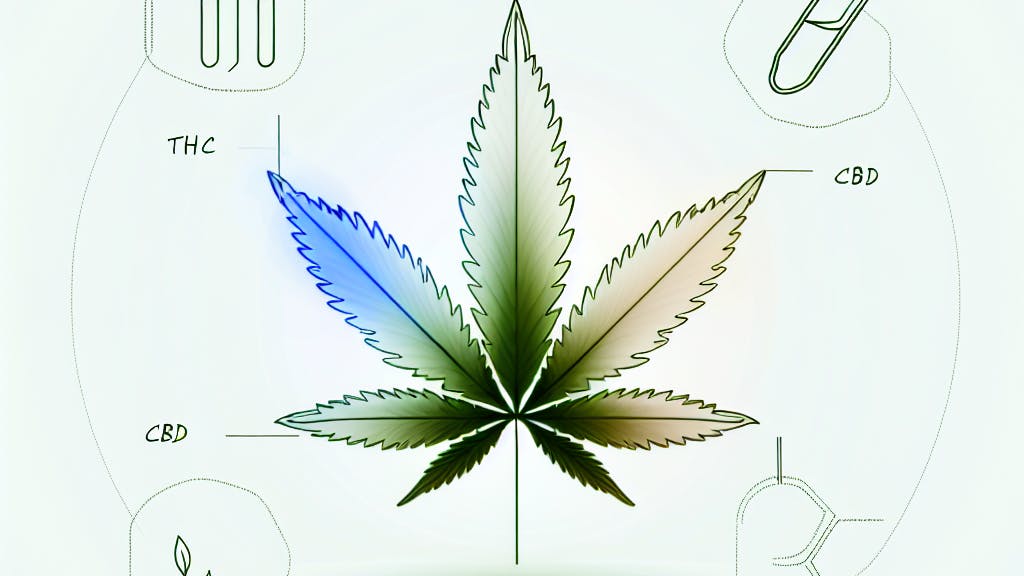Cannabis testing ensures product safety and quality. Here’s what you need to know:
Key metrics:
- Cannabinoid levels (THC, CBD)
- Terpene profiles
- Contaminant screening
- Residual solvents
- Moisture content
These tests verify safety, ensure accurate labeling, maintain potency, and meet regulations.
| Metric | Measures | Importance |
|---|---|---|
| Cannabinoids | THC, CBD levels | Potency, effects |
| Terpenes | Aromatic compounds | Flavor, effects |
| Contaminants | Pesticides, metals, mold | Safety |
| Residual solvents | Processing chemicals | Safety |
| Moisture | Water content | Mold risk |
Understanding these metrics helps consumers choose wisely, guides growers, and aids regulators. New tech like portable spectroscopy and AI are improving testing.
Related video from YouTube
Main Cannabis Testing Metrics
Cannabinoid Levels
Labs test for THC, CBD, and other cannabinoids to show potency and effects.
| Cannabinoid | Measures |
|---|---|
| THC | Psychoactive effects |
| CBD | Non-psychoactive, potential benefits |
| CBG | Minor cannabinoid, potential benefits |
| THCV | May affect appetite, metabolism |
ACS Laboratory tests for 11 cannabinoid profiles, with options for up to 30.
Terpene Amounts
Terpenes give cannabis its smell and taste, potentially affecting how it works in the body.
Common terpenes:
- Limonene: Citrus scent
- Myrcene: Earthy aroma
- Pinene: Pine-like smell
ACS Laboratory tests for 38 terpenes.
Safety Tests
Check for harmful substances:
- Pesticides (68 types tested by ACS Laboratory)
- Heavy metals (4 types)
- Residual solvents (21 types)
- Microbial contaminants
- Mycotoxins
Moisture Levels
Helps spot potential mold growth.
Strain DNA Tests
Identify strains and ensure naming consistency.
"Cannabis terpene testing allows cannabis growers, extractors, and users to identify the composition of terpenes in a product." – Encore Labs
Testing methods often include:
- Liquid chromatography for cannabinoids
- Mass spectrometry for trace cannabinoids
- FTIR spectroscopy for potency in oils and extracts
Reading Test Results
A Certificate of Analysis (COA) contains:
- Product name and batch number
- Testing date
- Cannabinoid profile
- Terpene analysis
- Contaminant screening results
Focus on:
- Cannabinoid levels
- Terpene amounts
- Presence of contaminants
- Microbial contamination
- Moisture content
Example COA for Papa & Barkley’s 1:3 Releaf Balm:
| Test | Result |
|---|---|
| Total Cannabinoids | Passed |
| Pesticides | Not Detected |
| Residual Solvents | Not Detected |
| Microbials | Passed |
| Mycotoxins | Not Detected |
| Heavy Metals | Not Detected |
Testing Methods
| Method | Use |
|---|---|
| HPLC | Cannabinoid potency |
| GC | Terpene analysis |
| MS | Trace cannabinoids, pesticides |
Result Reliability
Factors affecting accuracy:
- Lab accreditation
- Sample handling
- Equipment calibration
- Analyst expertise
To ensure reliability:
- Check lab certification
- Compare results from different batches
- Look for recent testing dates
"Reading a cannabis lab report is as simple as checking cannabinoid, terpene, and flavonoid potency while also reviewing contaminant levels." – Secret Nature
sbb-itb-430f9b7
Effects of Testing Metrics
For Buyers
Benefits:
- Accurate potency labeling
- Assurance of contaminant-free products
- Ability to compare products
Drawback: Testing costs can increase prices.
For Growers and Makers
| Benefit | Impact |
|---|---|
| Potency optimization | Improve crop potency |
| Compliance assurance | On-site testing as insurance |
| Product consistency | Create consistent, high-quality products |
"These cannabis cultivators are looking to optimize their potency in many ways… they use instruments like ours where they don’t have to send off to the lab to optimize their harvest." – Alexander Makowski, Sage Analytics
For Rule Makers
Testing metrics help:
- Set safety limits
- Ensure accurate labeling
- Protect consumers
Challenges remain, including inconsistent practices across states.
What’s Next in Cannabis Testing
Standardization and Certification
The Trust in Testing program aims to standardize protocols for purity and potency testing.
Advanced Testing Technologies
| Technology | Application | Benefit |
|---|---|---|
| Portable Spectroscopy | On-site analysis | Quick results |
| Immunoassay Test Kits | Detect specific compounds | Rapid identification |
| Electronic Nose Devices | Analyze terpenes, detect contaminants | Ensure quality |
Shift to Mass Spectrometry
Growing trend for potency testing, offering more confidence in data.
Focus on Recent Use Testing
New methods detect active THC within a 2-3 hour window, aligning with new laws.
Integration of AI and Machine Learning
Future developments may include:
- AI-enhanced data analysis
- Machine learning for pattern identification
- Automated quality control
Wrap-up
Cannabis testing metrics ensure product safety and quality. They cover:
| Metric | Purpose |
|---|---|
| Cannabinoid Levels | Measure potency |
| Terpene Amounts | Assess flavor profiles |
| Safety Tests | Detect contaminants |
| Moisture Levels | Evaluate stability |
| Strain DNA Tests | Verify authenticity |
The industry is evolving with new technologies and standardization efforts. As it grows, these metrics will continue to shape product development, compliance, and consumer safety in the cannabis market.

